Fifty-two weeks on the streets
- Published
- comments
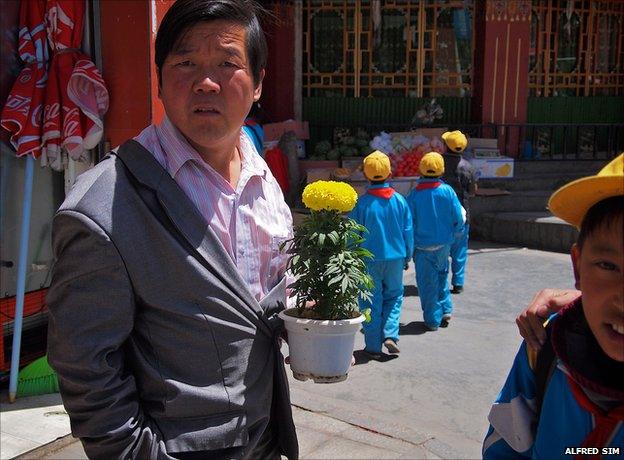
The Yellow Hat, Lhasa, Tibet, China, 2011 © Alfred Sim
Shooting to a brief can be a great way to improve your photography. Couple that with quality feedback and analysis and many will find their pictures become stronger and more thoughtful overnight.
That is the model many street photographers have been enjoying for the past 52 weeks as part of a project run by the Photographers' Gallery, external in conjunction with Sophie Howarth and Stephen McLaren, authors of Street Photography Now, something I wrote about back in 2010.
Each week, a leading street photographer would issue an instruction, external and a large band of photographers would take to the streets and capture their interpretation of the theme.
The resulting pictures were then uploaded to the photo-sharing site Flickr where members could view and indeed comment on the work.
But time is up and the last theme, which was set by Cristóbal Hara: "If you have talent, find your own way", external closes today.
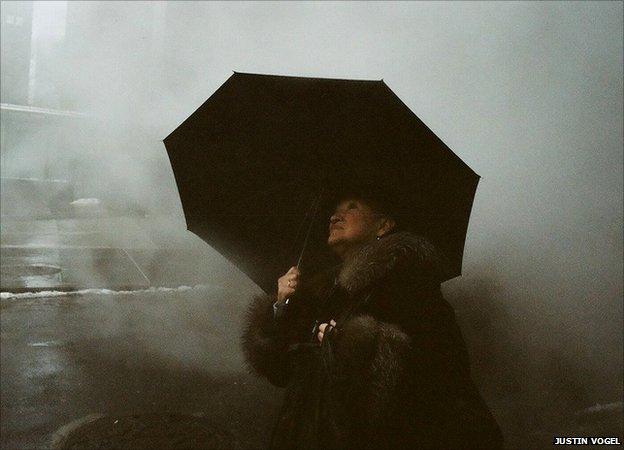
Justin Vogel: "This is not only the best picture I took for this project, it is perhaps the best picture I have ever taken. And the absolute truth is if it weren't for Martin Parr's: 'Wait For The Rain' instruction, there is no way I would have taken this shot. I would not have gone out on that rainy day to take pictures. I haven't shot anything as good since."
"It has been more rewarding than I could ever have imagined," author Sophie Howarth told me. "All over the world, there's been an army of people following the assignments, and the commitment, knowledge, generosity and humour of the online community that developed blew me away.
"But most importantly, the quality of images way exceeded my expectations. We had nearly 20,000 images submitted overall including at least 300 truly outstanding street photographs, external, more than enough to create Street Photography Now 2!
"It's a big ask to take on every assignment, and I was amazed just how many people submitted 52 photographs. Incredible friendships were made, numerous relationships put to the test, and as one participant put it: 'lots of us lost maybe a bit of balance between photography and life, but it brought us so much knowledge, discovering and meeting so many photographers, and becoming without realising part of an amazing community'."
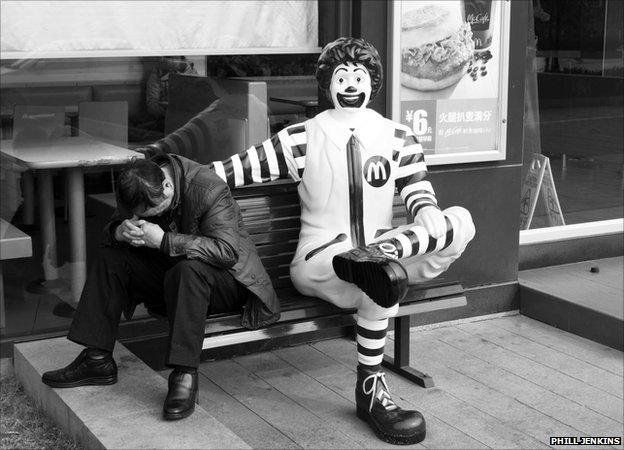
Sophie continued: "Perhaps what I'm most pleased about is the variety of instructions and people's willingness to try them all. We demanded people hang about in public toilets, talk to strangers, behave like an assassin, push through moments of extreme frustration, and of course keep going whatever the weather."
But there were occasional bumps along the way. The first week got off to a mixed start as there was confusion as to whether the pictures had to be shot that week or if participants could use images from their archives. It's the former in case you were wondering.
At this time, a number of moderators emerged from the group, including Sara T'Rula, external who brought a wealth of online experience to the scene, offering advice, encouragement and constructive criticism to those just starting out in the project.
There were other humps in the road, as not all the instructions from the photographers were popular.
"Many people objected passionately to Mirko Martin's call to, 'take pictures where you're not comfortable, where you feel exposed, threatened or morally on the wrong side, external,'" Sophie told me.
She added: "But those who were wiling to get outside their comfort zone that week produced some of the most chilling and memorable work in the project. Such as this shot by Jo Wallace, external."
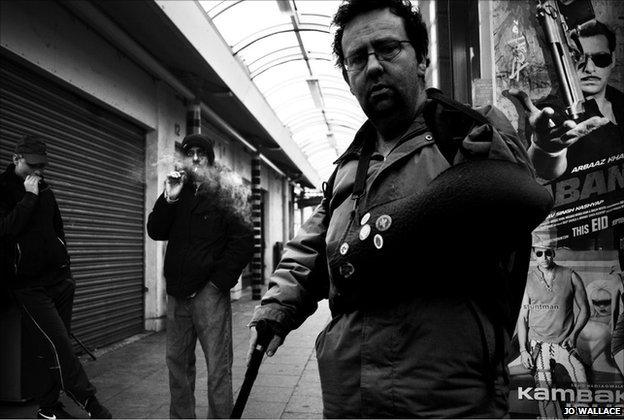
Sara agreed: "Quite a few members were simply uncomfortable in doing this. The instruction got a lot of discussion, but submissions took a hit. In the following weeks, submissions returned to their average levels, and I think those instructions proved useful, even for those who didn't photograph in response to them."
There was fun too. Munem Wasif's instruction to: "Be joyful! Dance in the street", resulted in many spellbinding pictures, such as the one below by Paolo Rabuffi, external.
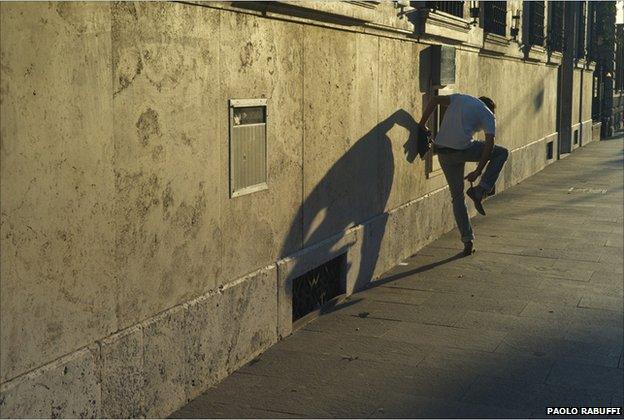
Other assignments such as Martin Kollar's: "See the characters but create your own plot, external," produced fascinating results.
Some like Gus Powell's: "Don't ask. Shoot fast, external" were short and simple to interpret, while some like Raghu Rai's: "Unless the supernatural comes and plays a part and reveals itself, the picture is only as good and nice as information can be," required some interpretation, something Jo Wallace demonstrated brilliantly in this picture, external.
Yet, by being pushed, many of the participants found they could delve into scenes they would otherwise have left well alone.
It also led to discussions among the participants around issues such as what makes a street photograph and how to deal with problems you might encounter when taking pictures.
"What is street photography?" asked Chris JL in one of the discussions, external. He added: "Trivial as it may sound, I don't think this is an easy question. Seeing the weekly SPN (Street Photography Now) project submissions is a window into what people out there - people that in most of the cases had not actively focused on SP before - think SP is, should, or could be. This vision is refreshing, often surprising, and definitely makes the project worth following."
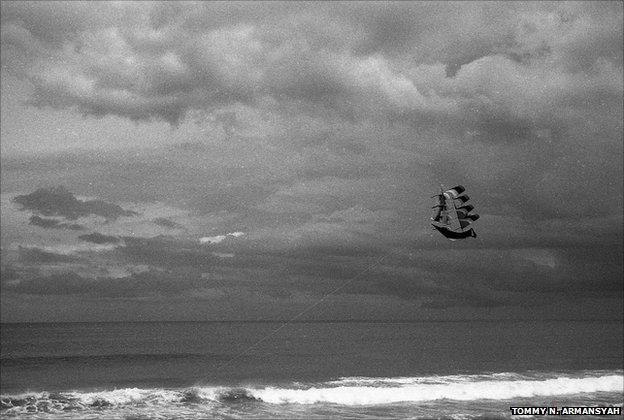
Tommy N. Armansyah's response to Michael Wolf's assignment: "Document some evidence of human ingenuity that would otherwise go unnoticed. Do it without including any humans in the picture."
Throughout the year, many found they had a voice through their pictures.
Anne Leroy found that the project pushed her to shoot pictures every week, external and for Phil Jenkins, external, it took him half-way around the world.
"Before the project, I was taking landscape pictures in Scotland, standing in a wet field with a tripod and now I am kicking around the back streets in China. I'm not quite sure how this happened," he said.
Similarly Joanna Casey, external wrote: "It's been fantastic! Not only have I made real and virtual friends who share my passion and interest, I love looking at all the wealth of talent on Flickr, and it's enriched my own photographic practice immeasurably (even if it doesn't show at times!) and has led me on to other private projects, opened my eyes and has been only positive. I would not have gone to Paris with Nick Turpin if not for being involved with this, and I have ideas for a photography festival in my own town now, which I never would have if not for meeting Brett..."
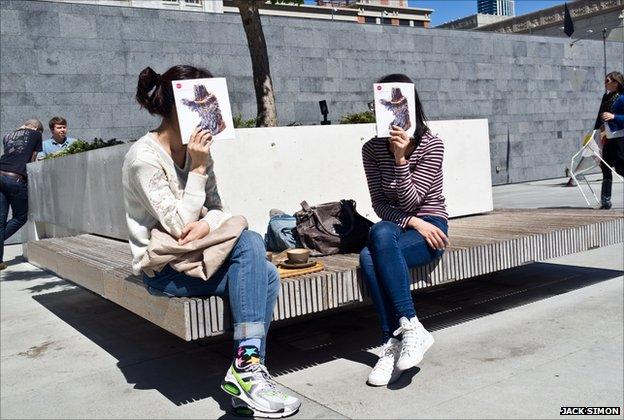
But what of those setting the assignments? Have the results met their expectations?
The other half of the book-writing duo is Stephen McLaren, external who was also given the task of coming up with one of the 52 instructions.
Stephen told me that: "In late January, it was my turn to 'instruct' the community and I decided to challenge them quite directly with the phrase 'follow the money, external'.
"Sometimes street photography can get a bit of a bad rap for being too concerned with visual puns and ephemera, but in this instance I was delighted that over 300 photographers went out onto the streets of their home towns and tried to interpret my instruction in a direct and concerned fashion.
"The instruction, albeit one of the harder ones from the project, brought back some memorable images reflecting concerns about how citizens live through an economic crisis and I was amazed to see how ingenious they were in using their cameras to bring back insights about wealth, poverty, and other social concerns. For me, this episode showed that the project could engage the photographers on a variety of levels and push them onto topics that were perhaps out of their comfort zones."
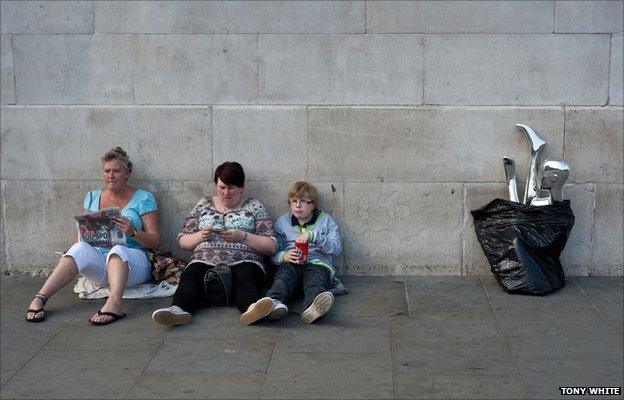
Tony: "I soon became hooked on the project and got into a routine of posting my shot for that week, finding out the next instruction on the Thursday afternoon or Friday morning and then spending the next week trying to get my best shot to fit that instruction."
Tony (user wobblyturkey, external on Flickr) started the project as a participant on day one and spent the first weeks devouring the pictures, comments and work of the professionals setting the weekly tasks. But as it progressed, he began to take a more active role and towards the end was helping to moderate the work and has attended workshops by David Gibson, external, Nick Turpin, external and Mimi Mollica.
Tony said: "I think that working to a brief and having the deadline is superb practice for a non-professional. The instruction being given by a respected professional in the field certainly added to my motivation, especially when the instruction-giver got involved; I think for many, the project came alive and started buzzing the week that Mimi Mollica, external set the instruction, as he got really involved in the discussion threads and in leaving feedback on people's photos."
It has been a long road for many, though some plan to carry on for another year, but whereas before they would have seen themselves as working in a vacuum, now they have the support of friends and are proud to see themselves as street photographers, external.
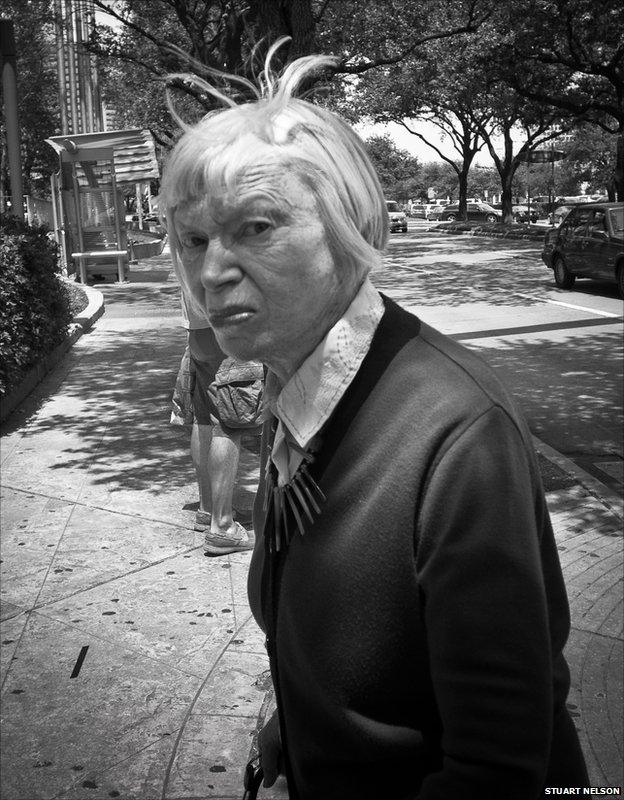
Andrew Glickman remembered Robert Capa's famous phrase: "If your pictures aren't good enough, you're not close enough," for his instruction and Stuart Nelson obliged with this close-up portrait